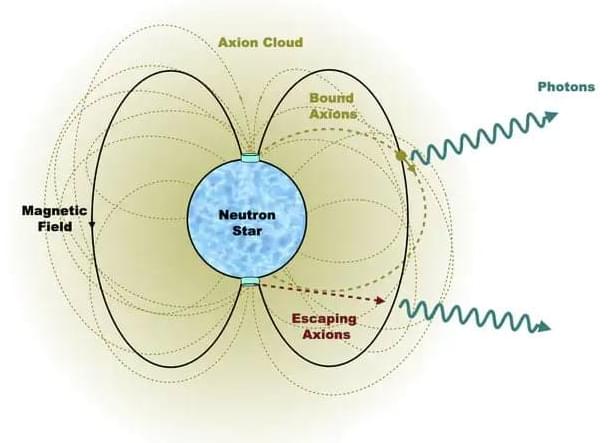Do the scientists want us to get Terminator killer robots? Because this is how you get Terminator killer robots.





Hypothetical particles called axions could form dense clouds around neutron stars – and if they do, they will give off signals that radio telescopes can detect, say researchers in the Netherlands, the UK and the US. Since axions are a possible candidate for the mysterious substance known as dark matter, this finding could bring us closer to understanding it.
Around 85% of the universe’s mass consists of matter that appears “dark” to us. We can observe its gravitational effect on structures such as galaxies, but we cannot observe it directly. This is because dark matter hardly interacts with anything as far as we know, making it very difficult to detect. So far, searches for dark matter on Earth and in space have found no evidence for any of the various dark matter candidates.
\r \r
Learn More About Anydesk: https://anydesk.com/spacetime Sign Up on Patreon to get access to the Space Time Discord!https://www.patreon.com/pbsspacetimeImagin…
SpaceX What about it!?
Detecting exploding primordial black holes from the universe’s first second may unveil new physics.
In that moment, pockets of hot material may have been dense enough to form black holes, potentially with masses ranging from 100,000 times less than a paperclip to 100,000 times more than the sun’s, according to scientists.
Then, as the universe quickly expanded and cooled, the conditions for forming black holes this way ended.
Scientists are now claiming that PBHs may be heating up and exploding throughout the universe.
What if reality ISN’T REAL? Join us… and find out!
Subscribe: https://wmojo.com/unveiled-subscribe.
In this video, Unveiled takes a closer look at simulation theory — the suggestion that everything you THINK is real, is actually an artificially generated sim!
This is Unveiled, giving you incredible answers to extraordinary questions!
Find more amazing videos for your curiosity here:
Is NASA About to Announce Alien Life? — https://youtu.be/lXT-2cQqiWU?
10 Big Questions About Parallel Universes — https://youtu.be/KjLmRVHHgMY?
#Simulation #SimulationTheory #Sim #Theory #Space #Science #Unveiled
Could you love an AI?
What does love with “digital humans?” look like?
Is this the future of relationships?
In this TechFirst, we chat with Artem Rodichev, CEO of Ex-human and former head of AI at Replika.
We dive into the concept of forming relationships with AI companions and the future of love and friendship in a world integrating advanced artificial intelligence. The discussion covers Rachev’s new startup, issues of loneliness and how digital humans might offer a solution, the intricacies and potential pitfalls of emotional AI interactions, and the evolving technology behind AI companions.
We also chat about some real-life stories, ethical concerns, and the emotional impacts of these digital relationships… including some of the most extremely negative realities.
00:00 Introduction to AI and Relationships.
00:58 The Concept of Digital Humans.
05:05 Addressing Loneliness with AI
07:40 Building AI with Personality.
16:54 Challenges and Ethical Considerations.
17:34 The Emotional Fallout of Removing Replica’s Romantic Features.
18:04 The Deep Connections Users Formed with Replica.
19:39 The Italian Ban and Its Consequences.
23:07 The Impact of AI Upgrades on User Relationships.
24:55 Real-Life Tragedies Linked to AI Companions.
27:45 Safety Measures and Ethical Considerations in AI Development.
31:55 The Future of Human-AI Relationships.
34:53 Concluding Thoughts on AI Companions.

Doctors have long known that inflammation plays a significant role in triggering heart attacks and strokes. Now for the first time, an anti-inflammatory drug is on the market to prevent these cardiovascular events.
“It is a game changer,” says Ian Neeland, MD, Director of Cardiovascular Prevention at University Hospitals Harrington Heart & Vascular Institute.
“We’ve known that low-grade, systemic inflammation is a powerful determinant of recurrent cardiovascular events. Colchicine is the first drug we have on the market for inflammation that reduces this risk,” says Dr. Neeland.